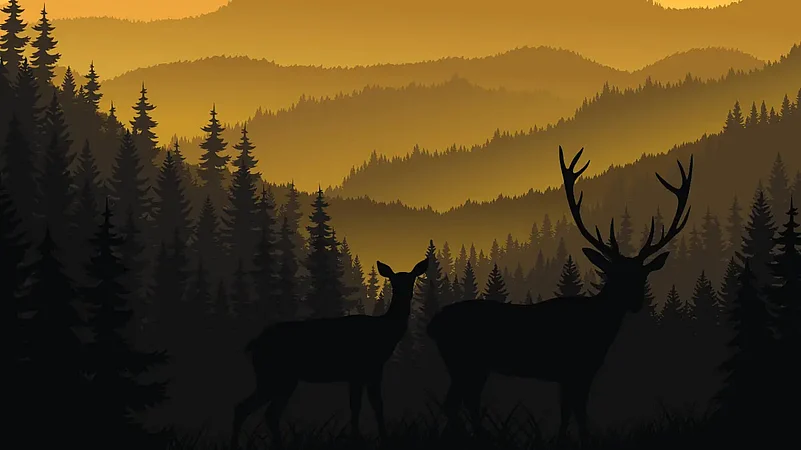Silas House: Exploring an Appalachian Writer’s Work
A Writer Who Tells His Story Like ‘A Gospel Song’
In his novels, Silas House deflly captures the varied landscapes of the American South, both emotional and physical. The eight essays in Silas House, which evoke awe and wonder, probe how he does it.

Edited By Sylvia Shurbutt
University of Kentucky Press,?
pp. 208, $32.95
“Since that night I have come to understand that sometimes the best families of all are those we create ourselves, the people we choose to be with,” writes American writer and an Appalachian native Silas House in Eli the Good (2009), a quintessentially Southern novel about a 10-year-old boy coming to terms with the realities of the war, which is imbued with a strong sense of place and affinity with nature.??
I will soon be heading to the States — the midwestern Cyclones, Iowa — if there is not another lockdown and if everything else goes to plan. The process of shifting started two years back when I consolidated a list of books I needed to read on the regional writers of the States, from the topography which interested me and my visions. Appalachian trails and listicles spread out on my odd twenty-plus tabs, and then came readings. Reading about how Gene Wilhelm’s conception of Appalachian culture arose in the 1700s when Scotch Irish and other British Isles and German people settled in the valley and ridge area of Virginia and North Carolina and lived alongside the Indians. Reading texts which reveal the tensions, genius and tones of Tennessee, Kentucky, West Virginia, and the Ohio hills, the Ozarks, Indiana, and even cities along Washington State’s coast, have been a divulging delectation.?
I had the pleasure of attending Yanyi’s ‘Architectures of Resonance’ workshop through a Kundiman scholarship where I got the chance to learn about writing lyrics and poetry dipped in prose. I was introduced shortly to the writings of Silas House published by The University Press of Kentucky, particularly my favourite essay from the book in question — ‘Reclaiming Music, Mountains, and Voice: Silas House as Journalist and Activist’. I had just finished reading a Goan adventure, Bina Nayak’s Starfish Pickle (2021) and I was immediately transported to something serious and meditative (Paul Anka in the background helped, just so you know). The eight essays in Silas House have been written consciously — the beautiful impact of probing the culture of the South apparent in art and establishing the life of a writer which I would otherwise have had not known. My awareness definitely increased with each essay, placed delicately one after the other — sketching awe and wonder.?
Life informs writing. As an Indian who had no idea about Silas House with some whereabouts of Appalachian trail through the many books and stories I have traversed, I dived in headfirst to explore what the book contained. Silas House orients his style, maneuvering Appalachia and more. An introspecting writer is anxiously microscoped with staid writing. Substantive writing, apparent through Sylvia Bailey Shurbutt’s obsession with Kentucky, glows in each passage, which filters in the aftermath of the enlightening interview of House in the end. The book is divided into chapters that talk about how he came to write what and why — Clay’s Quilt, A Parchment of Leaves, The Coal Tattoo, Eli the Good, and Southernmost.
Writing within seams, seamlessly trudging the waters and tasting words dipped in history, can be learned from the author who writes with utmost dedication and ample research, which is evident through the spectacular essays, ‘The Stories of Silas House and the Scent of Words : Looking at Appalachia and the World from the Inside Out’, ‘Redeeming Appalachia: Deconstructing Stereotypes of Gender, Race, and Religion in Silas House’s Appalachian Trilogy,’ are important pieces of literature and not just essays, as they leave the reader with sweetness and a gentle pat on the back. I remember my grandmother and think of history that heals. ‘Funny Looks and Queer Perspectives: Quareness and Quare Characters in the Writing of Silas House’, ‘Music in the Coal Tattoo and Clay’s Quilt’ and, ‘Lyricism and Metaphor in A Parchment of Leaves’ reinforced Silas House’s status as a hero of the American literature. He certainly is not a literary treasure with the tagline of a curmudgeonly English professor because of the reason that a whole book explaining what he does is now available and is evident of excellence in activism.
I felt disconnected with the history of the offsets and works because the problem with being a non-native is such that enough literature must be accessed in order to grasp the sentimentality in its truest sense. I felt honoured and delighted in reading about the richness of prose and impressive execution of each emotion in House’s work. I wish I had read his works at length to reason with appreciation what Sylvia Bailey Shurbutt writes in reverence and veneration: “I wondered if the trees were God. They were like God in many respects: they stood silent, and most people only noticed them when the need arose.”?
Dorothy Allison of the Bastard Out of Carolina (1992) fame exudes confidence in a reader and a native of Appalachia when she praises the writing of Silas House: “Like a down-home prophet, his language resonant enough to speed the heart. His method is simple, tell a true story in the guise of fiction and tell it like a gospel song.”?
Sylvia Bailey Shurbutt encapsulates a legacy in pages that were unknown to me and I am sure anyone who reads about House’s routine, working style, methods, and life as an aggregator of sorts, will see the pride of Appalachia woven through the unique voice of the Appalachian lover editor and co-author. She dissects but with caution, and she does not miss a thing.?

























